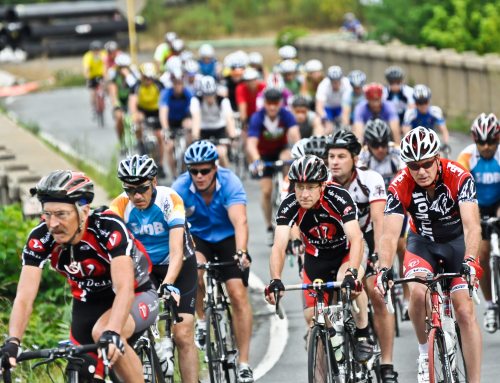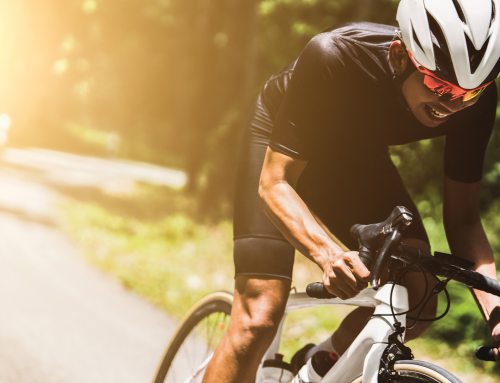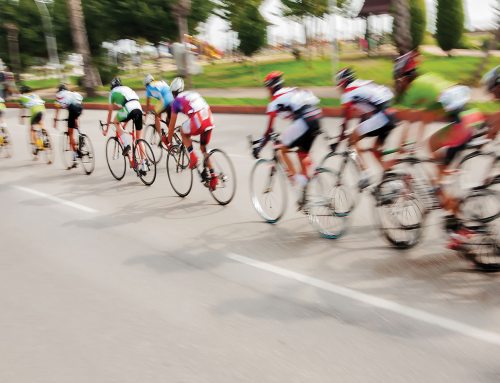
Anatomy of a Professional Bicycle Fit
By Victor Jiminez
Bicycle fitting and positioning have changed over the years. Twenty years ago we would just take some measurements and then plug those numbers into a formula and adjust the bike to that result. The process of fitting a bike to a rider has become a much more involved and accurate process. Professional fitters now take into account variables such as strength, flexibility, riding style, work stress level, even personality. The end result is that athletes are able to ride faster and longer than before because of improved efficiency and comfort from proper positioning.
What is a professional bicycle fitter?
Professional bicycle fitters are specialists that are dedicated to helping athletes become better riders through positioning and efficiency. They usually have a decade or more experience and use specialized measuring equipment to help evaluate a rider’s position. The space where the fitting takes place is typically a comfortable and private room. Privacy is important because the athlete needs to be comfortable enough to discuss their body ailments without judgement from on-lookers. Bicycle fitting is something that every cyclist should consider. It is not something just for elite athletes but anyone who takes their body and sport seriously and wants to stay injury free.
The basic process of a professional bicycle fit:
Interview
The fitting starts with an in-depth interview. The fitter will ask questions about your athletic history and goals and discuss your bicycle fit problems. This part of the fitting process is the most important as it allows the fitter to understand you as a cyclist. By understanding your issues the fitter will be able to take all of this into account when evaluating and establishing your position on the bike.
Physical Evaluation
After the interview process the fitter will take some basic anatomical measurements for reference such as inseam, foot length, shoulders, etc. Your flexibility and overall body strength is evaluated for range of motion and stabilization as it pertains to the bike. This is important so that the fitter can adjust the bike to accommodate your range or capacity. The fitter will take a close look at how your feet fit into your shoes and make recommendations on shoe selection and even custom foot orthotics if necessary.
On the bike evaluation
Finally you will move onto the on-bike evaluation. Typically you will ride a special indoor bike called a fitting bike. This bike is designed so that it can be adjusted to almost any rider. There is a new computerized fitting bike that allows adjustments to be made while you are on the bike riding. With this equipment the fitter can measure and evaluate visually on computer monitors how an adjustment affects your pedaling efficiency and power output. For example, the fitter could adjust your seat height and show you visually how it affects your efficiency and power output before it is applied to your bike. During this process a fitter will look at the many variables of your position and make adjustments accordingly. Some of the specifics that the fitter will evaluate are seat height, foot pedal interface, handlebar reach and height, even your pedal stroke. Once this process is completed your fitter will have you riding in an “ideal” position that should be comfortable and efficient.
Applying your new position to a bike
The fitting should be done before you buy a new bike to make sure that you buy the correct size or have a bicycle custom made around your ideal position. Alternately, the position of your seat and handlebars are then transferred from the special fitting bike to your existing bike. This is done by changing components such as stem and handlebars to get you as close as possible to your new position.
What is an Ideal position?
The truth is that there really is no such thing as an ideal position. Only an ideal position for a given point in time when you were evaluated. Our bodies are not static and are always changing. A professional fitter takes this into account and will position you inside an “ideal” window. This will allow your body extra space to move within this narrow window and avoid performance and comfort problems as your fitness changes. If you have a custom bicycle built you will have the maximum amount of adjustability as the bike will be built within the middle of your range.
Summary
Bicycle fitting has become much more sophisticated over the last twenty years. There are now specialist bicycle fitters that have dedicated spaces and sophisticated equipment for evaluating cyclists’ positions. The process starts with an extensive interview then moves on to basic measurements and evaluation on a special fitting bike. Once those dimensions are determined the position is then transferred to an existing bike or used to build a bike around your ideal position. If you are serious about maximizing your performance and ensuring that you remain injury free, you should consider a professional bicycle fit.
# # #
Victor Jimenez is the owner and professional bicycle fitter at bicyclelab.com. Bicycle Lab is a small boutique studio that specializes in bicycle fitting, custom bicycles, and education. Victor teaches clinics and classes to individuals, coaches, and teams on bicycle fit, and the technical aspects of cycling. http://Bicyclelab.com,
http://Facebook.com/bicyclelab, victor@bicyclelab.com






